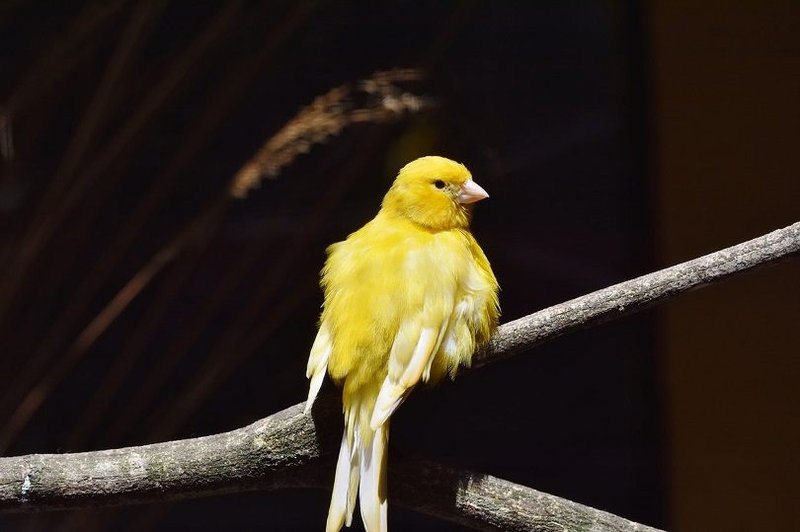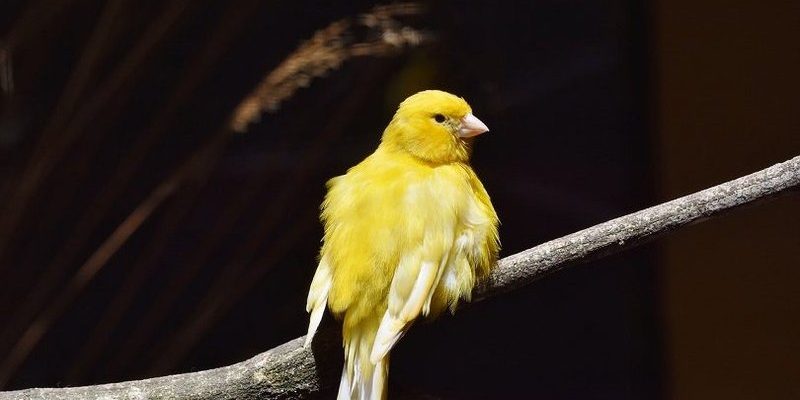
Canaries have been beloved pets for centuries, and their popularity only seems to grow. They’re not just pretty faces; they also have a rich background that ties them to mining safety and even royal courts. Often, people think of canaries as simply pets that sing, but there’s a world of interesting facts beneath their feathered surface. Let’s get started!
1. Their Singing Isn’t Just for Show
You might think that canaries sing just to please us, but there’s more to their melodies. In the wild, male canaries use their songs primarily to attract mates and establish territory. Their vocal abilities serve a practical purpose: a strong singer is often seen as a healthy, robust male, making him more appealing to potential partners.
Each species of canary has its own song style. Some are known for their melodious tunes, while others might have more rapid, choppy sounds. These musical styles can vary not only by species but also by individual birds. Should you ever find yourself sitting quietly with a singing canary, take a moment to appreciate that every trill and whistle is part of an intricate communication system.
2. Canaries Come in Many Colors
When you picture a canary, it’s likely a bright yellow bird that pops into your mind. But here’s the thing: canaries actually come in a fascinating array of colors! They can be yellow, orange, white, and even shades of green. This colorful variety stems from selective breeding practices that began hundreds of years ago.
Some of the most popular color varieties include the *Harlequin*, known for its patchy colors, and the *Lizard*, which flaunts a unique iridescent sheen. The color can vary among individual birds even within the same breed. So, if you ever consider adding a canary to your family, you might be overwhelmed by the beautiful choices!
3. They Have Unique Characteristics
Canaries can be divided into three main categories: song canaries, color canaries, and type canaries. Song canaries, like the *Yorkshire* and *American Singer*, are bred specifically for their musical abilities. Color canaries, as discussed earlier, focus on the bird’s color, while type canaries emphasize physical features like size and shape.
What’s even more fascinating is that some canaries can be a combination of these categories. For instance, a *Norwich* canary can be prized for both its singing and its lovely coloration. This variety ensures that there’s a canary out there for everyone, whether you’re looking for a feathered singer or a colorful companion.
4. Their Origins Are Quite Interesting
Canaries are originally from the Canary Islands, which are located off the northwest coast of Africa. These little birds were first domesticated by Spanish sailors in the 15th century, who brought them back to Europe as prized pets. The rich history of canaries includes a period where they were even used in coal mines to detect toxic gases.
Whenever a canary showed signs of distress or stopped singing, miners knew it was time to evacuate. This unique role not only saved lives but also cemented their status as symbols of safety and caution. You might say that the canary has a legacy that goes far beyond being a simple household pet.
5. They’re Social Birds
Canaries are social creatures by nature, thriving in environments where they can be around others—especially their own kind. It’s common to see them living in small flocks, chirping and singing together in harmony. If you have the space, consider getting more than one canary; they often enjoy each other’s company and can be happier when they have a friend.
However, it’s important to note that not all canaries get along perfectly. Sometimes, males can be territorial, especially during breeding season. If you’re thinking of becoming a canary parent, it’s wise to introduce them slowly to see how they interact.
6. They’re Not Just Pets—They’re Competitors!
Believe it or not, canaries also have a competitive side! Enthusiasts often participate in competitions where their canaries are judged on their singing ability, coloration, and overall appearance. These events can get quite intense, with breeders showcasing their prized birds, each vying for the title of the best canary.
These competitions are a testament to the dedication and passion many people have for their feathered friends. Breeders spend years perfecting their birds, focusing on everything from their song patterns to the richness of their colors. If you ever visit a bird show, you might be amazed by the variety and talent on display!
7. Canaries Have Unique Behaviors
One of the cutest things about canaries is their quirky behaviors. They often enjoy bathing, flapping their wings enthusiastically while splashing water everywhere. You might even find them rolling around in their food or hopping around happily on their perches. These behaviors are not only entertaining but also indicate a healthy, happy bird.
Canaries also show different personalities. Some might be shy and reserved, while others are bold and outgoing. Observing their behaviors can be a delightful experience, making each day as exciting as the last. When you own a canary, you’ll quickly realize they’re more than just pets—they become part of your life’s little joys.
8. Their Diet Matters
Like us, canaries need a balanced diet to thrive. A healthy canary diet usually consists of high-quality seeds, fresh fruits, and vegetables. It’s essential to avoid feeding them too many seeds because, while they love them, seeds alone don’t provide all the nutrients they need.
Some great options to include in their diet are leafy greens, carrots, and even the occasional treat of scrambled eggs. It’s important to introduce new foods gradually and observe how your canary reacts. Remember, a well-fed canary is often a cheerful canary!
9. They Can Live Long Lives
Canaries are known for their relatively long lifespans. With proper care, they can live anywhere from 10 to 15 years, and some even make it to 20! This longevity means you’ll have a companion for quite a while, so it’s vital to provide a nurturing environment.
Regular vet check-ups, a balanced diet, and mental stimulation through toys or social interaction can all contribute to a canary’s long and happy life. Knowing this can help prospective owners understand the commitment involved in caring for these feathered friends.
10. Caring for Your Canary Is a Joy
Caring for a canary can be incredibly rewarding. They require a clean cage, fresh food, and regular social interaction to thrive. Creating a safe, stimulating environment will help ensure that your canary remains happy and healthy.
Be prepared to spend time bonding with your new friend. Talk to them, encourage their singing, and make sure they have plenty of toys to play with. The connection you build with your canary can be a source of joy and companionship, making your efforts truly worth it.
In conclusion, canaries are much more than just pretty birds that sing. With their vibrant colors, engaging behaviors, and rich histories, they offer a unique experience to anyone lucky enough to share their lives with them. Whether you’re considering adding a canary to your family or just curious about these delightful birds, there’s so much to appreciate about them. So, the next time you hear a canary singing, remember all the wonderful things that make these little birds special!

